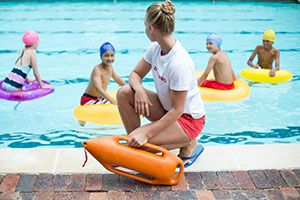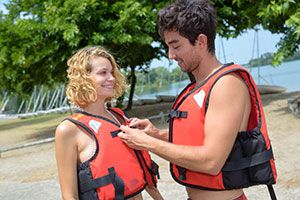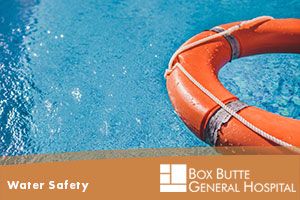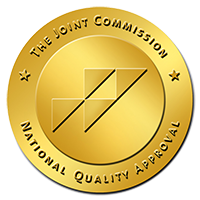Water Safety
Drowning Recognition
According to the CDC 2015 statistic, drowning is the leading cause of death for children ages 1 year to 4 years. Most commonly these children drown in swimming pools but older children often drown in ponds, lakes, or rivers.
- Most people who are in trouble in the water cannot or do not call for help. They spend their energy just trying to keep their heads above water to get a breath.
- Normally, an active drowning person will try to press down with arms at the side, instinctively attempting to keep their head above water. All energy is going in to the struggle to breath, and the person cannot call for help.
- A passive drowning person is not moving and will be floating face down on the bottom or near the surface of the water.
- A swimmer in distress may be too tired to swim to the edge of the pool, the shore, or to a boat, but can still float and still breath.
- A distressed swimmer may be able to call for help while floating, treading water, or clinging to an object for support.
- Someone who is swimming but making little to no forward progress may be in distress.
- If not helped, a swimmer in distress may become a drowning victim.

Water Safety Tips:
More children 1-4 years die from drowning than any other cause of death except birth defects.
- Enroll your child in swimming lesson as soon as you think your child is ready.
- Never allow children to swim alone whether it’s in a pool a lake.
- Be aware of small bodies of water your child might encounter, such as bathtubs, fishponds, ditches, fountains, rain barrels, and watering cans—even the bucket you use when you wash the car. Empty containers of water when you're done using them. Children seem to be drawn to places and things like these and need constant supervision to be sure they don't fall in.
- Children who are swimming—even in a shallow toddler's pool—always should be watched by an adult, preferably one who knows CPR. The adult should be within arm's length, providing "touch supervision" whenever infants, toddlers, or young children are in or around water. Empty and put away inflatable pools after each play session.
- Backyard swimming pools, (including large, inflatable above-ground pools), should be completely surrounded with at least a 4-foot (1.2 meters) high fence that completely separates the pool from the house. The fence should have a self-closing and self-latching gate that opens away from the pool, with the latch at least 54 inches high. Check the gate frequently to be sure it is in good working order. Keep the gate closed and locked at all times. Be sure your child cannot manipulate the lock or climb the fence. No opening under the fence or between uprights should be more than 4 inches (10 cm) wide. Keep toys out of the pool area when not in use so that children are not tempted to try to get through the fence.
- Keep a safety ring with a rope beside the pool at all times. If possible, have a phone in the pool area with emergency numbers clearly marked.
- Spas and hot tubs are dangerous for young children, who can easily drown or become overheated in them. Don't allow young children to use these facilities.
- Your child should always wear a life jacket when he swims or rides in a boat. A life jacket fits properly if you can't lift it off over your child's head after he's been fastened into it. For the child under age five, particularly the non-swimmer, it also should have a flotation collar to keep the head upright and the face out of the water.
- Be sure to eliminate distractions while children are in the water. Talking on the phone, working on the computer, and other tasks need to wait until children are out of the water.
- Empty and put away inflatable pools after each play session.
For additional information please use following web site:
https://www.cdc.gov/safechild/drowning/

Sizing your life jacket
Put your arms above your head and lean your head back while someone else lightly pulls up on the life jacket. If the life jacket slides right over your face, try tightening the straps. If it still slides over your face with a light pull, you need to get a smaller jacket or a different model. Alternatively, if the jacket is so tight that it makes breathing uncomfortable even when the straps are fully loosened, then you need a bigger jacket.
If you’re about to hit the water and you’re trying to make sure you’ve provided a proper-fitting life jacket to a passenger, another alternative to the approach mentioned above is to have the person put on their life jacket and slowly walk from shore into chest-deep water. If they put their hands above water then submerge themselves up to their necks, the life jacket should not slide up and over their face if it’s properly sized and tightened.
Open Water Swimming Safety
- Don’t swim alone. Even good swimmers need buddies!
- A lifeguard (or another adult who knows about water rescue) should be watching children every time they are in or near the water. Closely supervised younger children while in or near the water – use "touch supervision," keeping no more than an arm's length away.
- Inform your children to never dive into water except when permitted by an adult who knows the depth of the water and who has checked for underwater objects.
- Never let your child swim in canals or any fast-moving water.
- Teach children about rip currents. If you are caught in a rip current, swim parallel to shore until you escape the current, and then swim back to shore.
- At the beach, stay within the designated swimming area and ideally within the visibility of a lifeguard.
- Seek shelter in case of storm. Get out of the water. Get off the beach in case of lightning.
Boating Safety
In 2013, 77 percent of all fatal boating accident victims drowned, and of those who drowned, 84 percent were not wearing a life jacket.[1]
- Children should be wearing a life jacket before they get near the dock or body of water. Life jackets should be worn at all times when on boats.
- Make sure the life jacket is the right size for your child. The jacket should not be loose and should always be worn according to the instructions with all straps connected and secured.
- Adults should set a good example and wear life jackets for their own protection. Blow-up water wings, toys, rafts and air mattresses should not be used as life jackets or personal flotation devices.
- Adolescents and adults should be reminded (even as a passenger) of the dangers of boating when under the influence of alcohol, drugs, and some prescription medications. Do not consume alcohol and operated a boat. Do not ride in a boat operated by someone consuming alcohol.
- Children follow your example, whenever you are on a boat – everyone should wear a life jacket, kids and adults.
______________________________
[1] Safe Kids Worldwide



